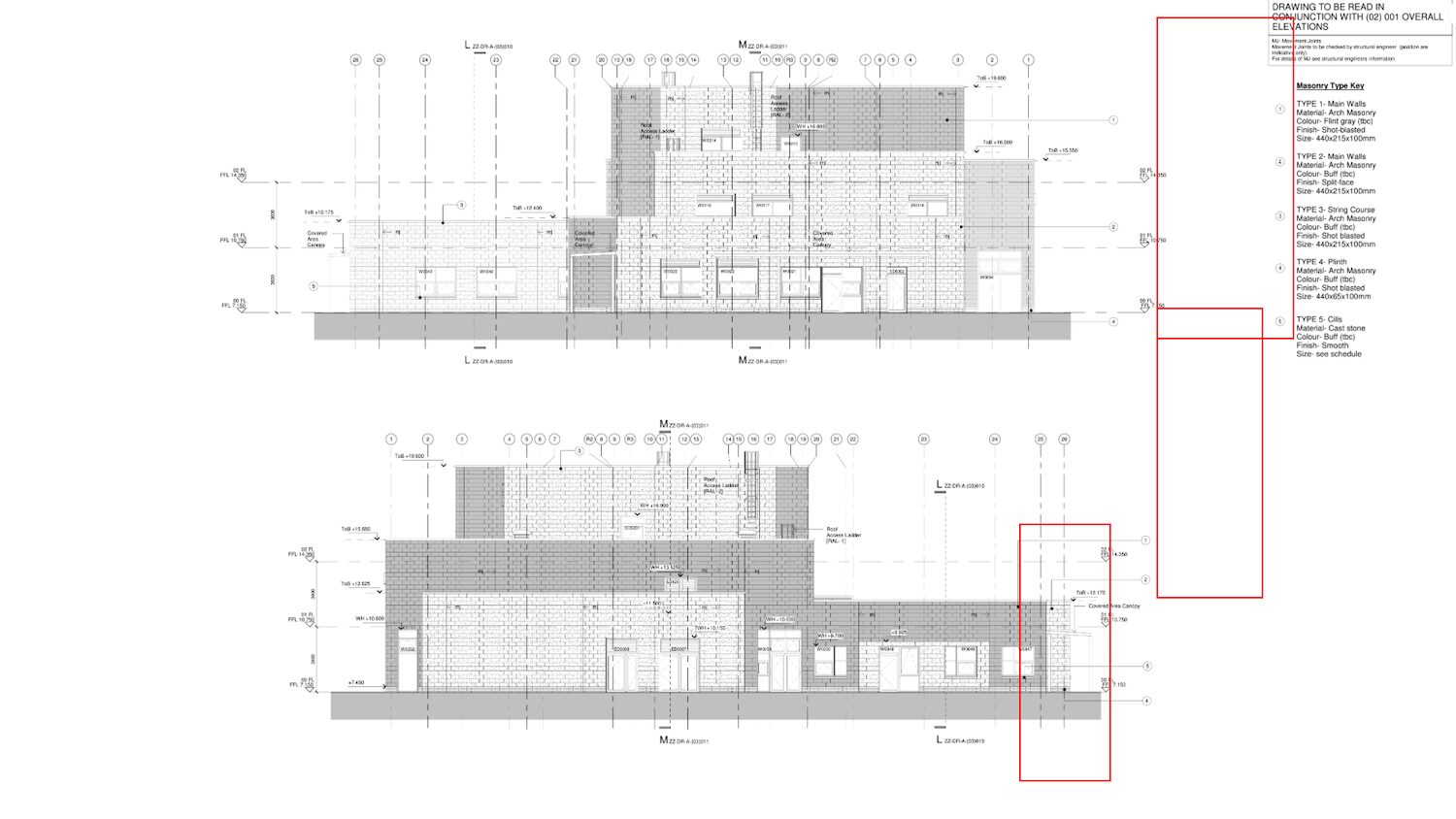
From analysing police data to managing information: Michelle Zompi’s journey
Michelle Zompi, head of RLB Digital, reveals how her background in police intelligence shaped her data-driven approach to digital transformation, AI and information strategy in the built environment.

DC+: You began your career in policing. How did that lead you to construction?
Michelle Zompi: I studied law, but realised I wasn’t keen on the advocacy side. What I loved was research and analysis, which led me into intelligence work – at the time, police forces were just beginning to bring in intelligence analysts. That’s where I discovered my passion for data: pulling together information from all sorts of disparate sources and using it not just to respond to crime, but to anticipate it.
We’d analyse an offender’s previous history – their transport methods, routes, target types – to predict where they might strike next. It was fascinating, forward-looking work, and it completely hooked me on data and what it could do.
That was in the early 2000s, when the National Intelligence Model was first introduced. I spent about five years at Thames Valley Police. I loved it, but found the growing political influence frustrating, so I made the difficult decision to leave.
And that’s when you moved into the built environment?
Yes, though it wasn’t planned. After having children, I helped set up a consultancy business supporting major infrastructure projects. I worked across different sectors, helping clients adopt better information and data practices – including BIM.
One of my first major projects was with Network Rail, helping embed new information methodologies. That led to work with Amec Foster Wheeler on development consent orders. Those processes generate huge amounts of data under tight deadlines, so I helped design an environmental impact assessment process that mapped and connected information to make it accessible and auditable. They liked the approach and asked me to join them – that’s when I became fully immersed in digital construction.
“Many organisations want to use AI, but are realising their data isn’t ready. That’s actually a good thing because it’s forcing clients to get their ‘data house’ in order.”
What does RLB Digital offer?
We’re a subsidiary of RLB and we have three core strands. The first is information management – helping clients define their requirements, understand what they need, and set up the right processes to meet those needs.
The second is development, which focuses on low-code and no-code solutions. You don’t always need expensive software to solve your problems – often, it’s about connecting and automating what you already have. Using tools like Microsoft Power Apps or Power BI, we can streamline processes quickly and affordably.
The third is technology strategy – helping clients make informed decisions about their tech stack, especially when transitioning between systems. We encourage them to think beyond specific software brands: understand your information needs first, and let your technology facilitate them. That way, you’re not locked in and can adapt as tech evolves.
We’re doing a lot of work across healthcare, education and increasingly, data centres, where owners are under pressure to improve how they manage and use their asset information.
Is the industry using data in a more sophisticated way now?
Definitely – and it’s accelerating. The rise of AI has made people take data quality seriously. Many organisations want to use AI, but are realising their data isn’t ready – it’s inconsistent, incomplete or siloed.
That’s actually a good thing because it’s forcing clients to get their ‘data house’ in order. They’re cleaning, verifying and aligning information with business processes. We’ve seen a big increase in RFPs asking for help to do exactly that.
AI has become a real catalyst: whether driven by cost, efficiency, compliance or the golden thread. Everyone knows they can’t benefit from AI until their data is solid.
What kinds of AI applications are emerging?
There’s huge variety. You might build an AI agent that queries an organisation’s internal data – something as simple as an HR assistant that answers policy questions or as complex as analysing asset performance data.
For instance, a healthcare estate could use AI to analyse maintenance logs and identify patterns in air-conditioning failures, spotting which models or sites are most prone to issues and where pre-emptive maintenance could help.
The key is bringing together information that’s currently scattered across multiple platforms – asset databases, FM systems, spreadsheets – and making sense of it.
We’re also seeing organisations wanting to reclaim control of their data. Many are moving away from proprietary software because they don’t want to be dependent on vendors who effectively ‘own’ their information. They want their data stored in their own environment so they can analyse and use it freely.
It sounds like a big investment. Are smaller firms getting left behind?
It doesn’t have to be a massive investment. It’s more about mindset than money. There’s an upfront investment, but the pay-off is huge.
We are concerned that small builders risk being left behind, which is why we’ve been working with Construction Coach, funded by CITB and Nottingham Trent University, to help guide smaller firms in how and when to embrace digital tools.
That said, smaller organisations can actually have an advantage. They’re more agile. It’s harder to turn a big ship than a small one – large firms often have ingrained ways of working that make change slow.
Can you give an example of a small-scale improvement that made a big difference?
One client, a small facilities team, wanted to manage work orders more efficiently. We built a simple Power app that connected to the data they already held in Microsoft systems. It cut reporting time by 90%, freeing up the equivalent of seven weeks of one person’s time over a year.
Another client in education was spending three weeks every month maintaining a huge Excel workbook that multiple contractors constantly updated. Our solution validated inputs automatically.
These were small interventions, using software they already owned, but with transformative impact.
“We encourage clients to take a low-code or no-code approach. Often, the tools they already have can be connected and configured to achieve what’s needed.”
How big a challenge is interoperability in all this?
It’s a major issue, and one that’s really coming to the fore. A lot of organisations are realising their data is effectively locked inside proprietary software platforms. They want to regain control, to have their information in their own space, where they can ringfence it, interrogate it and use it across different systems.
True interoperability means being able to move data freely as technology evolves, without being tied to a single vendor. To achieve that, my advice is always to start with the fundamentals: understand what information you’ve got, what you actually need, and where it needs to flow to and from. Once you’ve mapped that, you can build processes that allow flexibility and consistency, rather than letting the software dictate how you work.
We also encourage clients to take a low-code or no-code approach wherever possible. Often, the tools they already have can be connected and configured to achieve what’s needed, and when technology inevitably changes, your systems and information can adapt with it.
Structuring the data, refining the CDE
Sorting out the way clients structure their data is one of the key services offered by RLB Digital. One such project was for a client undertaking a major warehouse refurbishment. They needed a transparent and reliable way to manage digital project deliverables, including BIM-generated asset data.
RLB Digital developed an information management solution using a cloud-based platform, powered by Morta, specifically designed for the construction and built environment industries to plan and track all deliverables against set requirements. “We worked with the client to define exactly what information was needed at each stage, agree formats and naming conventions, and set clear, consistent processes,” says Zompi.
The platform gave the client early visibility of upcoming deliverables, and real-time dashboards to monitor progress, identify gaps and make faster, better-informed decisions. RLB also configured the client’s CDE – Autodesk BIM 360 – linking it to the planning system for seamless upload review and coordination. Regular checks of the data ensured accuracy and continuous improvement, with results shared across the design team.
Is it difficult to measure the benefits of investing in digital transformation?
Yes, particularly for qualitative improvements like confidence in data or reduced rework. It’s easy to measure time and money, but harder to quantify trust and quality. The key is to capture how confident people are in their data before changes are made, then measure again later.
We’ve seen cases where introducing a proper CDE improved contractor profitability by 25%, because they weren’t constantly reworking or chasing missing information. Everything was traceable and consistent – and that clarity removes so many bottlenecks.
Is it hard for your team to keep up with such fast-moving technology?
We’re a team of just over 20, and every one of us has a niche focus area. Each person spends up to 40% of their time staying up to date – testing tools, researching and exploring what’s coming next.
In the digital world, fees are generally higher, which allows us to invest time in continuous research. It’s essential, otherwise you’d fall behind in months.
Are there particular tools or developments making the biggest impact?
It’s less about specific software and more about avoiding overreliance on any one platform. Things change so fast.
Of course, AI language models like ChatGPT have had a massive influence. Even simple uses – like asking an internal AI assistant to summarise all the meetings and emails you missed while on holiday – can save hours of admin. That’s a tangible productivity gain.
Then there’s the rise of AI agents – dedicated digital assistants focused on specific functions such as finance, HR or project management. The next step is ‘agents of agents’, where one master agent connects across domains to provide integrated insights. That’s where we’re heading.
But there’s still a lot of misunderstanding about safe use. I overheard someone on a train recently say they were feeding confidential bank documents into ChatGPT to summarise them – not realising they were putting sensitive data into the public domain. If you’re using an internal, ringfenced AI environment, that’s fine, but otherwise you risk major data breaches.
And all of this loops back to fundamentals: if your data and processes aren’t accurate or consistent, your AI will amplify those errors. That’s as true in construction today as it was in policing 20 years ago.
Keep up to date with DC+: sign up for the midweek newsletter.



